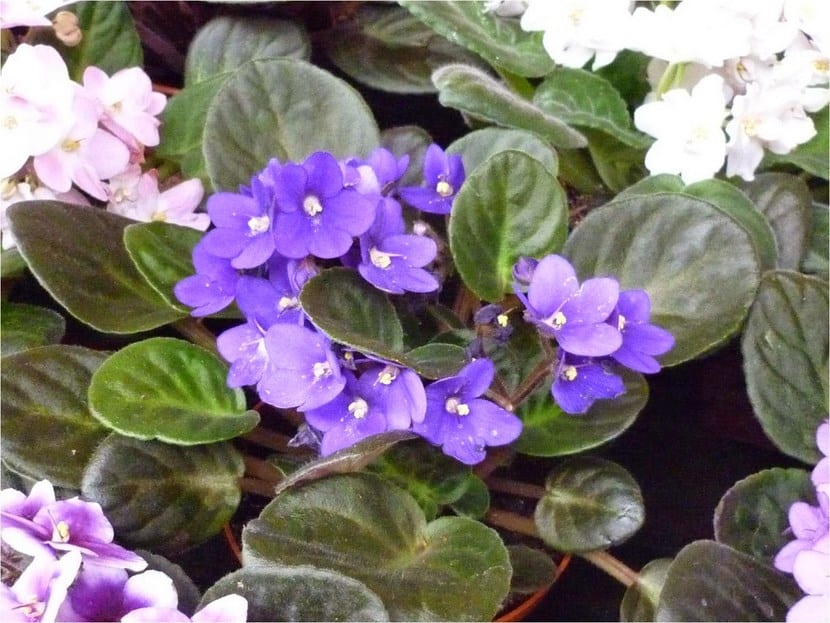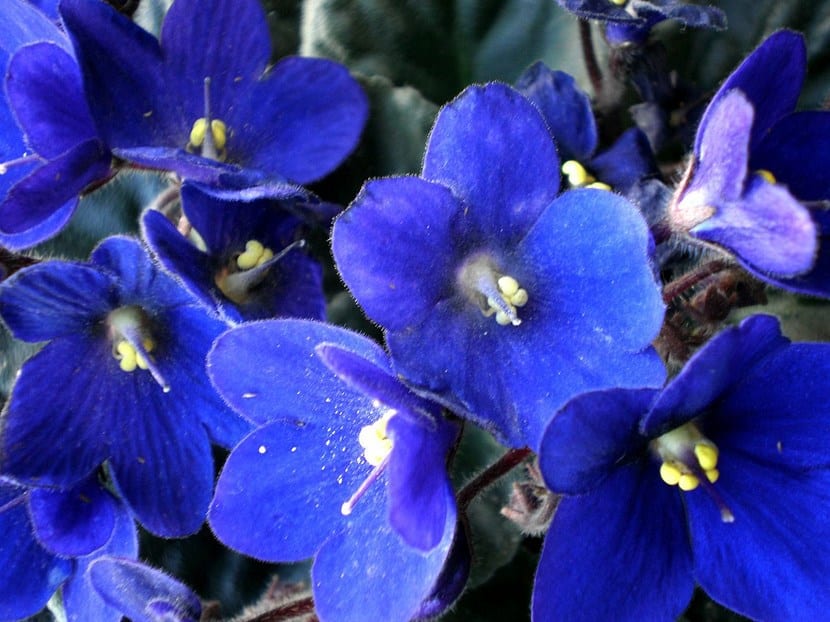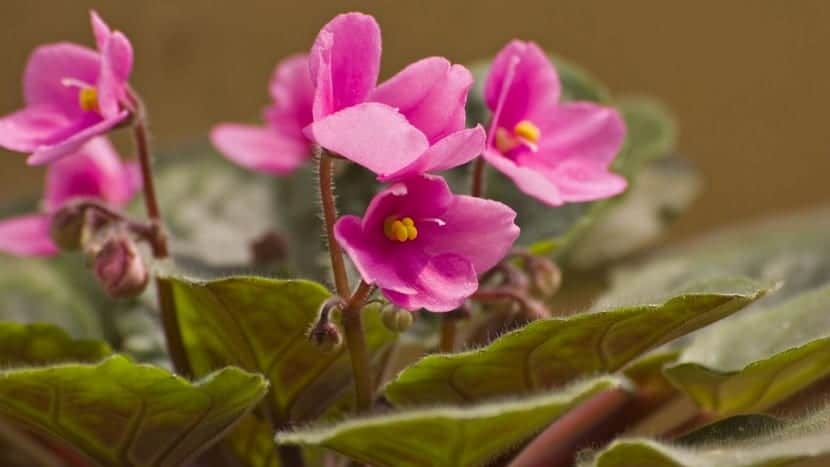
One of the most popular plants on the market is the African violet as it is a species that adapts quickly to indoor environments and that is why it is a great alternative for those who live in flats without balconies or terraces.
Moreover, the African violet flowers come in various hues For this reason, the plant is showy and appears as a very attractive and beautiful ornamental plant.
Important care

La African violet is a plant native to Tropical Africa although today they can be found almost everywhere in the world. Growing them is something simple, although they also have their secrets and that is why it is worth knowing their specificities to achieve the best care.
For have healthy and pretty African violets it is necessary to avoid that the plant is exposed in direct form to solar rays because then its leaves burn and wither quickly. For this reason, it is important to think very well about the place where the plant will rest to avoid this problem. After purchasing the plant, check it weekly to find out if the leaves are beginning to be affected. If you see signs of wilting, move it quickly to a less lit area. If the plant remains indoors, place it next to a window so that it receives natural light.
This is not the only thing to consider as irrigation is also key. The watering of the African violet should be regular but without excess, as the plant does not tolerate puddles and it is easy for it to rot. Check the substrate before watering to verify if it is really dry, even better if you sink a couple of fingers into the soil so that the surface layer does not fool you and avoid wetting the leaves and flowers when watering.
Aspects that help

There is some healthy habits to have a pretty African violet, such as removing dust from the leaves so that the plant can breathe better. Regular control of pests and diseases is also recommended as it is a very permeable plant that is easily contagious.
It is best to remove wilted leaves and flowers immediately to prevent the spread of fungi and to appeal to the use of fungicides as soon as they are detected.
During the colder seasons, protect the plant by placing it indoors as the optimum temperature for African violet is between 18⁰C and 20⁰C.
The plant also needs to be transplanted as it grows in size, something that has to happen when the foliage looks very thick. Otherwise, the roots will be too depressed and for this reason flowering could be hindered.
Would it be advisable with this species to prune withered or deteriorated leaves?
Hello Griselda.
Yes, highly recommended 🙂.
A greeting.
I usually find it in nurseries but I have never bought it because it seems complicated ... does it require acidic irrigation water like azaleas and fuchsias?
Hello Griselda.
Not like them, but yes, it is highly recommended to water it with acidic water.
Greetings, and good luck if you dare 🙂.
the leaves of my African violet plant are facing down instead of standing upright, which could be due to
Hi Irma.
It may be that you are suffering from excess water.
I recommend you take it out of the pot and wrap your earth bread with a double layer of absorbent kitchen paper. keep it like this one night and the next day plant it back in the pot. Treat it with a spray fungicide to avoid the appearance of fungi and do not water for about 4-5 days.
Good luck.
Hello,
My plant was almost 2 years without flowers and this year finally they have grown 4. In addition, the leaves are very yellow and the new ones that come out are acquiring that yellowish tone even though they are small. The plant is in the living room, it receives a lot of light and at some point of the day it receives direct sunlight, although through the window glass. Is there something I'm not doing right? Thanks!
Hi Bea.
It could be that this substrate (soil) is running out of nutrients, so it would be advisable to plant it in a slightly larger pot with new soil (but without removing that from the roots).
Greetings.